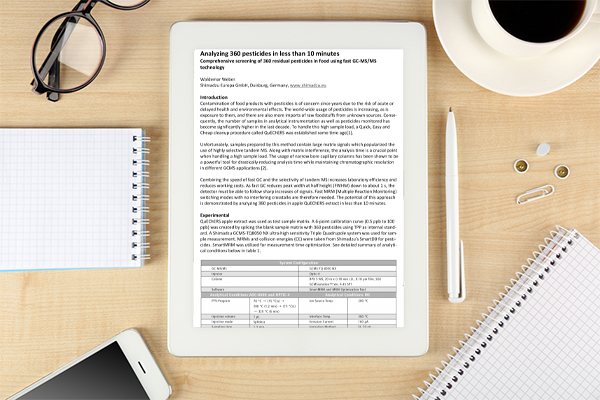Application Note: Analyzing 360 pesticides in less than 10 minutes
- Like
- Digg
- Del
- Tumblr
- VKontakte
- Buffer
- Love This
- Odnoklassniki
- Meneame
- Blogger
- Amazon
- Yahoo Mail
- Gmail
- AOL
- Newsvine
- HackerNews
- Evernote
- MySpace
- Mail.ru
- Viadeo
- Line
- Comments
- Yummly
- SMS
- Viber
- Telegram
- Subscribe
- Skype
- Facebook Messenger
- Kakao
- LiveJournal
- Yammer
- Edgar
- Fintel
- Mix
- Instapaper
- Copy Link
Posted: 10 June 2019 | Shimadzu Europa GmbH | No comments yet
Contamination of food products with pesticides has been a concern for years due to the risk of acute or delayed health and environmental effects. The world-wide usage of pesticides is increasing, as is exposure to them, and there are also more imports of raw foodstuffs from unknown sources.
Consequently, the number of samples in analytical instrumentation as well as pesticides monitored has become significantly higher in the last decade. To handle this high sample load, a Quick, Easy and Cheap cleanup procedure called QuEChERS was established some time ago.
Unfortunately, samples prepared by this method contain large matrix signals which popularized the use of highly selective tandem MS. Along with matrix interference, the analysis time is a crucial point when handling a high sample load. The usage of narrow bore capillary columns has been shown to be a powerful tool for drastically reducing analysis time while maintaining chromatographic resolution in different GCMS applications.
Related content from this organisation
- Application Note: Measuring flavonols in tea leaves
- Application Note: Quantitative analysis of catechins in tea leaves
- Application Note: Quantitative analysis of carotenoids in tea leaves
- High-speed analysis of bitter flavours in beer
- Application Note: Determination of lactose or fructose intolerance









